Remembrance Sunday. On 11 November 2018, 93 years ago, the Armistice was signed that ended World War One.
Four years later, on 3 July 1922, the Duke of York unveiled the Cambridge war memorial.
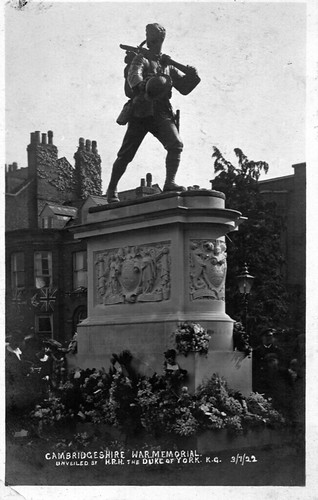 |
| Source: Geoff Jones' Flickr photostream. |
The larger-than-life bronze sculpture shows a bare-headed young man in the Cambridgeshire Regiment uniform of a private, walking purposefully and twisting his head to look towards his right. He smiles. He's not going off to war but returning from war. We can tell this from his jaunty stride, his bare head and the German helmet hanging from his back pack: a trophy taken from the enemy. And the stride is truly a stride: two inches longer than normal.1
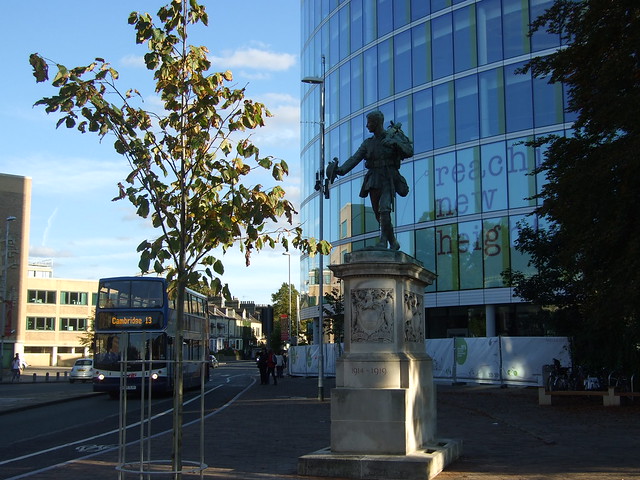

In his right hand, the young man holds out his own wreathed helmet and a rose. Three other roses lie behind his feet, resting on the scroll bearing the artist's name. With his left hand, the soldier shoulders a rifle. From the rifle barrel hands a laurel wreath, symbol of victory. The Australian historian Ken Inglis calls the roses 'floral emblems of triumph' although I'm not sure what the exact symbolism of the rose is in this context.2
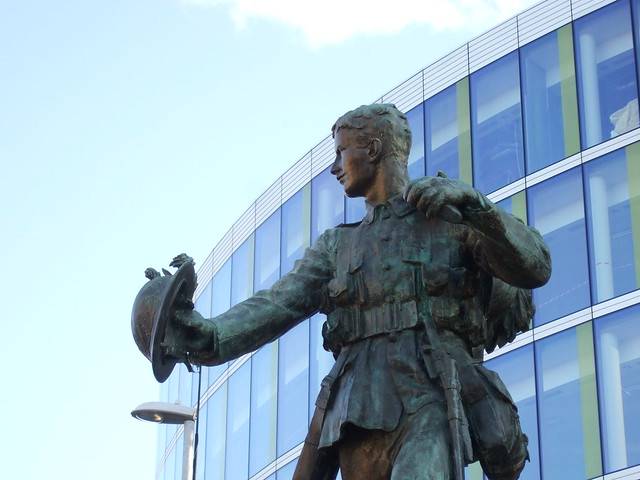
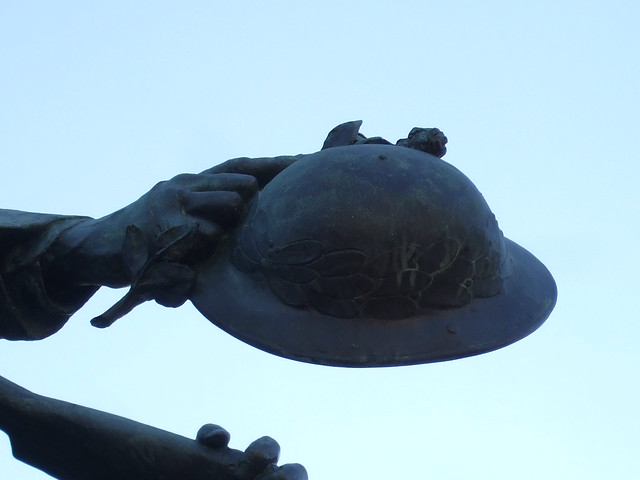
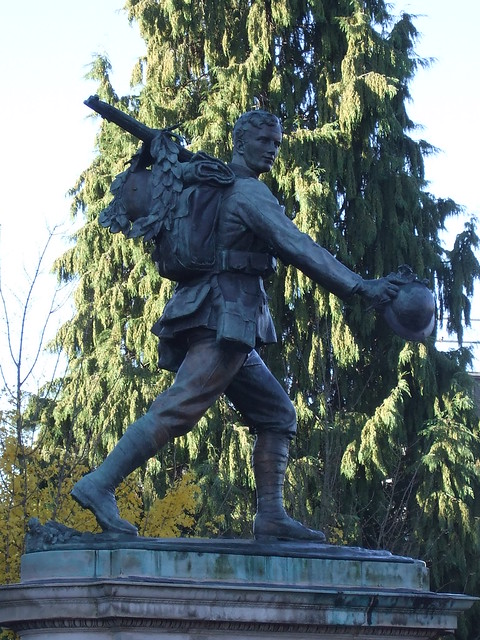
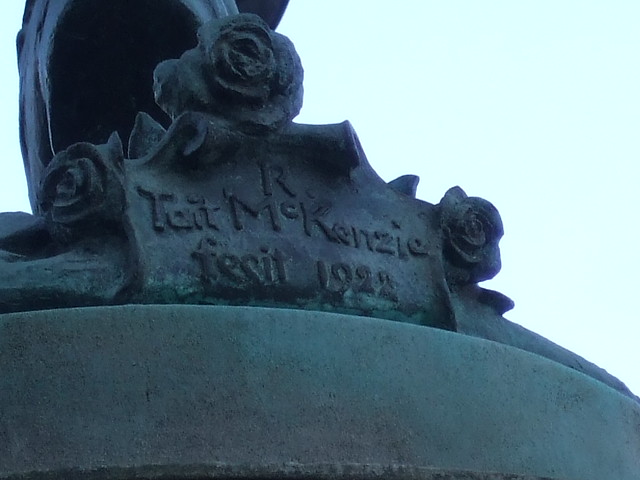
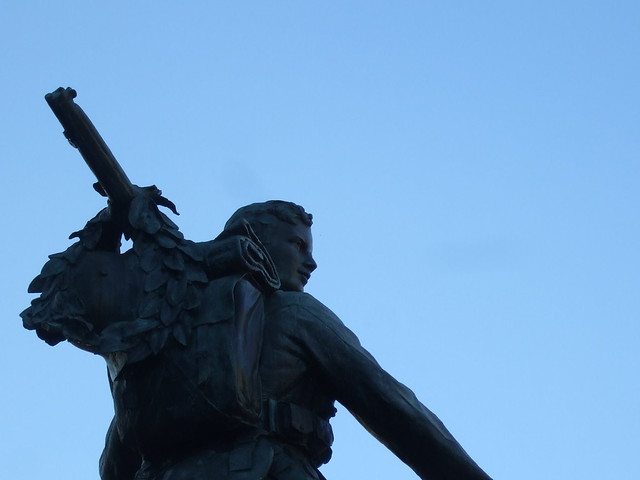
One side of the stone plinth bears the University of Cambridge's motto. The Latin means 'from here, light and sacred draughts'.
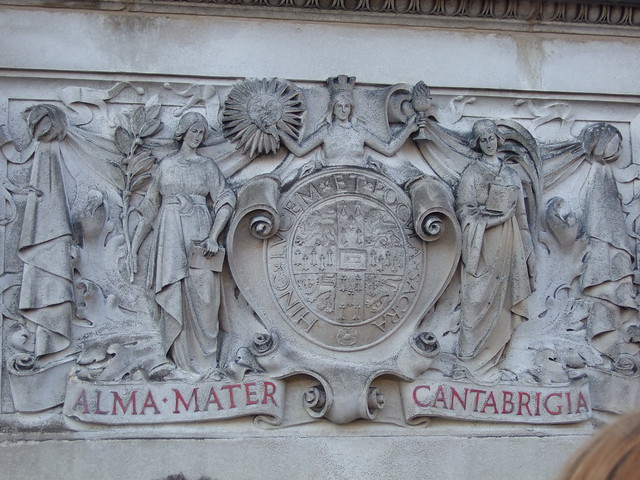
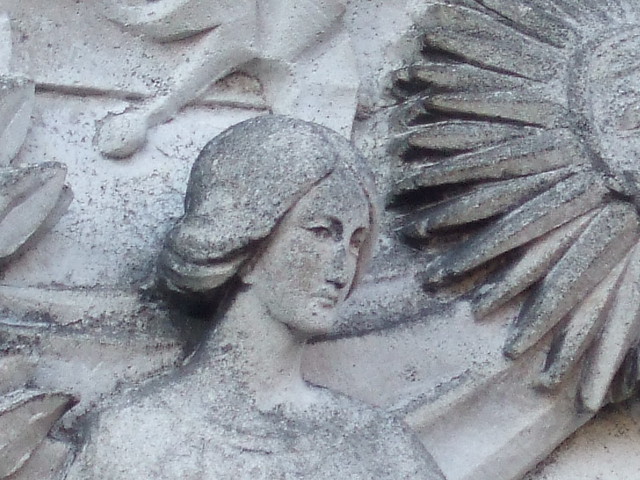
A sculpture in use
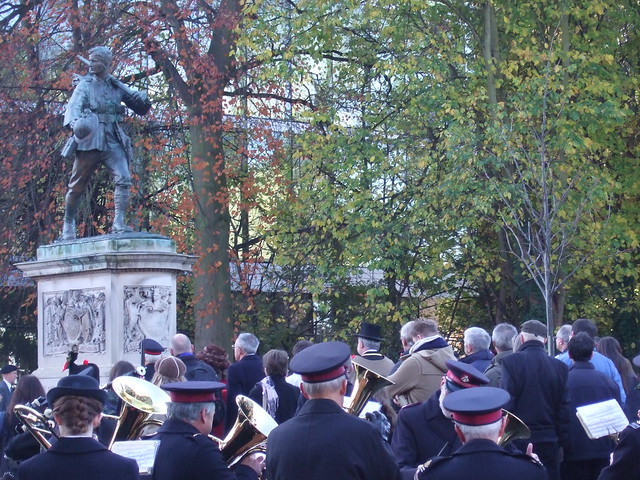
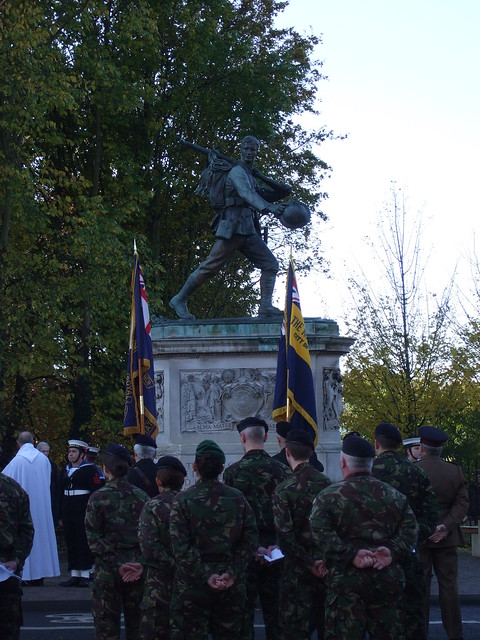

Who was Robert T. Mackenzie?
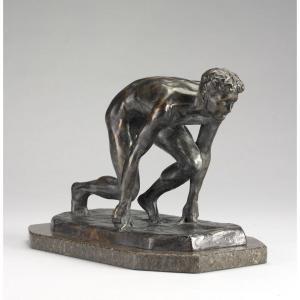 |
Mackenzie, The Sprinter, 1902
|
 |
| Mackenzie, The Shotputter, 1911 |
 |
Mackenzie, The Sprinter and The Plunger, in stamp form
|
Indeed.
 |
1886-7 Medals at McGill University, Montreal
Source: Physical and Health Education Canada.
|
Soldier or college athlete?
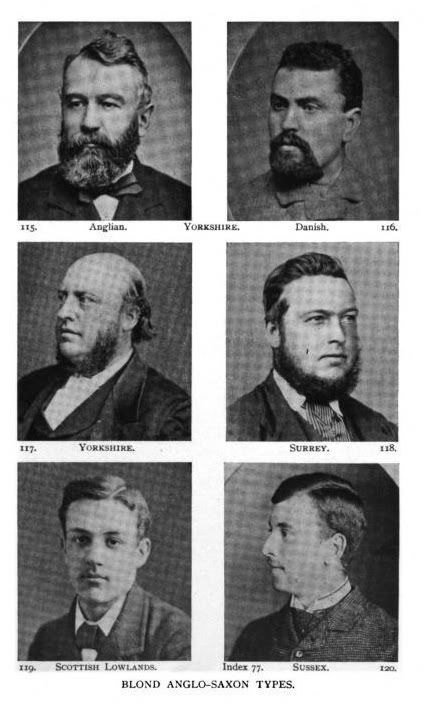 |
| From W.Z. Ripley, Races of Europe, 1899 |
This statue is certainly not the sad, tired, shell-shocked veteran, known from photographs.
 |
Source: Imperial War Museum. part of "GEISER THEODORE (MONS) COLLECTION" (photographs) Made by: German official photographer 1918-03
British prisoner of war captured by the Germans during the offensive.
|
 |
Source: Imperial War museum. part of "GEISER THEODORE (MONS) COLLECTION" (photographs) 1918
A shell-shocked British soldier captured by the Germans
|
Instead, he is a fit, healthy and confident university-educated sportsman.
I'm not sure if today's onlookers and participants appreciated that they were gathered around an 'East Anglian racial type', based on studies of athletic undergraduates.
Title of sculpture: The Homecoming
Sculptor: Robert Tait Mackenzie, a Scottish-Canadian sculptor and Professor of Physical Education and Physical Therapy at the University of Pennsylvania
Date: 1922
Where? Hills Road, junction with Station Road, outside the Botanical Garden
More:
For more photos of the Remembrance Day ceremony, check out Sir Cam's atmospheric series.
For thousands more memorials, visit the War Memorials Archive.
References
1 D. Boorman, At the Going Down of the Sun: British First World War Memorials, York: Ebor Press, 1988, p.242↩
2 K.S. Inglis, 'The Homecoming: The War Memorial Movement in Cambridge, England', Journal of Contemporary History,/i>, vol. 27, 1992, p.583.
↩
3 Quoted in N. Penny, 'English Sculpture and the First World War', Oxford Art Journal, Nov. 1981, p.38.
↩
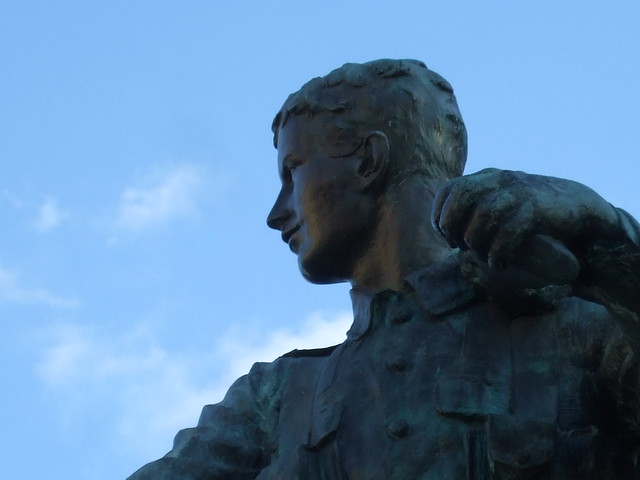
Permalink: http://artincambridge.blogspot.co.uk/2012/11/the-peculiar-history-of-cambridge-war.html

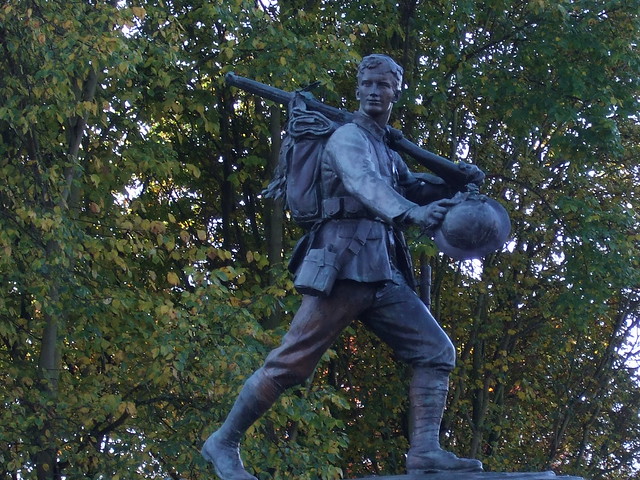
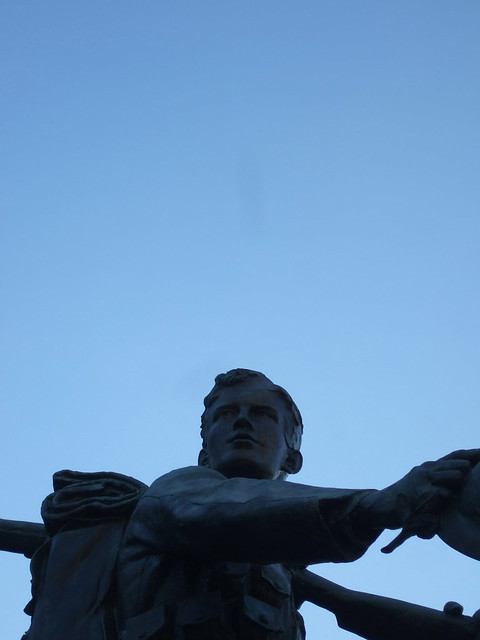

No comments:
Post a Comment